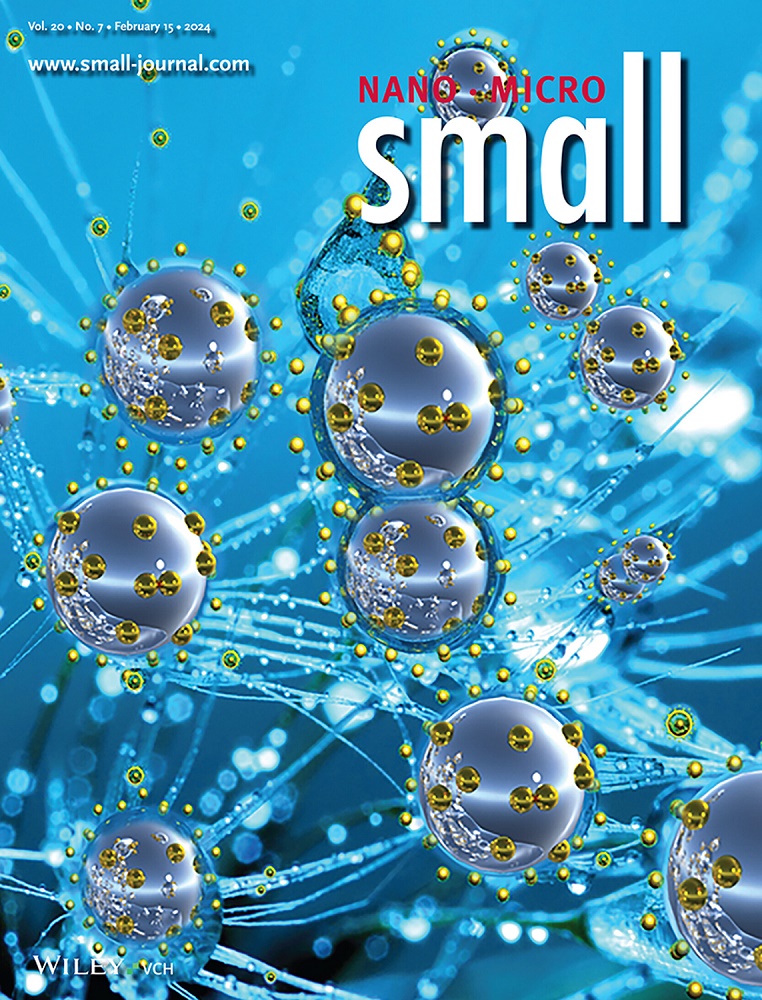Multifunctional pH‐Responsive Gemini Surfactant
IF 13
2区 材料科学
Q1 CHEMISTRY, MULTIDISCIPLINARY
引用次数: 0
Abstract
Stimuli‐responsive surfactants have garnered significant attention as promising candidates for diverse applications in efficient oil recovery, programmable all‐liquid devices, and microreactors owing to their dynamic interfacial self‐assembly behavior under specific triggers. However, contemporary applications of stimuli‐responsive surfactants remain constrained within monofunctional paradigms, significantly impeding their integration into advanced multifunctional manufacturing. Here, an interesting pH‐responsive gemini surfactant is reported that can dynamically switch between gemini (GTL, pH ≥ 8.0) and single‐chain (TL多功能pH响应Gemini表面活性剂
刺激响应表面活性剂由于其在特定触发下的动态界面自组装行为,已成为高效采油、可编程全液体装置和微反应器等领域的有希望的候选物,引起了人们的极大关注。然而,刺激响应表面活性剂的当代应用仍然局限于单一功能范式,严重阻碍了它们与先进多功能制造的整合。本文报道了一种有趣的pH响应gemini表面活性剂,它可以在gemini (GTL, pH≥8.0)和单链(TL+, pH≤6.0)构象之间动态切换,促进了可逆油水分离、结构液体、3D打印和保温气凝胶的自适应功能。当由CO2/Ar触发时,GTL充当智能乳化剂,在10个循环的重复使用中实现高效的油/水分离。TL+和硫酸纤维素纳米晶体(CNC - OSO3 -)在油水界面处的静电共组装驱动堵塞膜,产生可重构的全液体结构。此外,TL+/CNC - OSO3 -稳定的乳剂表现出自支撑特性,具有双重功能,既可以作为空气/油浴中复杂图案的3D打印油墨,也可以作为绝热气凝胶的先进前体。密度泛函理论计算揭示了GTL在油水界面上的pH依赖性吸附和TL+/CNC - OSO3 -的共组装是由丰富的非共价相互作用驱动的。这种pH响应表面活性剂解决了多功能制造的关键需求,为下一代智能材料建立了自适应范例。
本文章由计算机程序翻译,如有差异,请以英文原文为准。
求助全文
约1分钟内获得全文
求助全文
来源期刊

Small
工程技术-材料科学:综合
CiteScore
17.70
自引率
3.80%
发文量
1830
审稿时长
2.1 months
期刊介绍:
Small serves as an exceptional platform for both experimental and theoretical studies in fundamental and applied interdisciplinary research at the nano- and microscale. The journal offers a compelling mix of peer-reviewed Research Articles, Reviews, Perspectives, and Comments.
With a remarkable 2022 Journal Impact Factor of 13.3 (Journal Citation Reports from Clarivate Analytics, 2023), Small remains among the top multidisciplinary journals, covering a wide range of topics at the interface of materials science, chemistry, physics, engineering, medicine, and biology.
Small's readership includes biochemists, biologists, biomedical scientists, chemists, engineers, information technologists, materials scientists, physicists, and theoreticians alike.
 求助内容:
求助内容: 应助结果提醒方式:
应助结果提醒方式:


